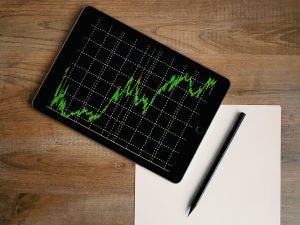With a historic heat wave covering most of the United States, it seems like a good time to talk about the sun. More specifically, the potential power of the sun to not only cool our homes but alter the business of energy production. Here’s what to know about how the solar industry began and where it has been before.
The development of solar energy
When it comes to generating power and electricity on a large scale, the use of solar is relatively new compared to other methods such as coal or water power – only beginning in the 1970s. However, the idea of using the sun for power dates back to 7th Century B.C. when mirrors and glass were used to light fires. A Swiss scientist was believed to develop the first instrument to collect solar energy in order to cook food in 1767 and Albert Einstein published a paper on the photoelectric effect the same year his famous theory of special relativity was published – 1905 – and was later awarded a Nobel Prize for this research.
Over the next century, inventors, scientists, and engineers continued to grow and develop the capacity to harness the power of the sun. For example, the Bridgers & Paxton Solar Building in Albuquerque, New Mexico, was the first solar-heated office building in the world – completed in 1956 and NASA launched the first Nimbus spacecraft – powered by a 470-watt photovoltaic array – in 1964.
The first big solar entrepreneurial venture
Solar water heaters can be considered the first commercial business venture that blossomed during the late 1800s and early 1900s. In a state like California where there was plenty of sunshine and no coal, making use of this passive resource seemed like an obvious choice and many companies sprang up. The first solar water tanks began as mere metal canisters facing the sun, but slowly became more sophisticated with different ways to trap and hold on to the heat. Then in 1908 an engineer, William J. Bailey, invented a solar thermal collector that was separate from the actual tank and would not only allow households to have hot water day and night, but allowed the water to get hotter more efficiently due to the way it passed through the exposed copper pipes.
Business was great until the mid-1920s when natural gas became a cheap and easy resource to use in California, pushing down demand for solar technology in the state. At the same time, Florida was looking for alternative energy options and a company in Miami bought the rights to Bailey’s invention. Before the start of World War II, over 100,000 solar water heaters were installed in Southern Florida. But the war put a sharp halt to the industry due to scarce resources and higher costs of materials.
The potential for solar energy today
The solar industry has grown exponentially in the last decade and is projected to continue to do so. This may come from climate change becoming more evident and a desire to have more net-zero energy solutions, or it could be because producing solar has simply become cheaper. Globally, more policies have been implemented to reduce the risk of investing in renewable energy which has made solar the ‘cheapest electricity in history,’ according to a 2020 World Energy Outlook report.
Whether solar technology truly can be “net zero” in terms of carbon emissions depends on how it is developed and maintained. As Harvard Business Review noted, there is a dark side to solar power when solar panels end up in landfills. But, the potential is there. As a Washington Post article stated in 1979, “The sun provided a portion of America’s energy needs for almost 50 years. No pollution, radioactivity or [ruined] landscapes remain as a legacy. The water heaters functioned quietly, cleanly, and efficiently when no alternatives were available. This suggests that the sun can have a renaissance, using technologies that are little different from those developed early in the 20th century.”







